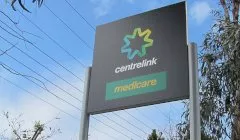Save
How retirement income is taxed
Superannuation funds remain the most tax-effective means of securing retirement income. However, just because pensioners receive a tax-free income stream from their super doesn’t mean they are completely exempt from taxes.
How retirement income is taxed
Superannuation funds remain the most tax-effective means of securing retirement income. However, just because pensioners receive a tax-free income stream from their super doesn’t mean they are completely exempt from taxes.

Every superannuation fund is made up of taxed (concessional) and untaxed (non-concessional) components. The Australian Taxation Office (ATO) uses these components to subject the incoming and outgoing money to tax, depending on which portion the contribution will go to or come from.
The difference between the two is determined by how contributions are made, the individual’s age and income, tax offset eligibility and which component the income is taken from.
Concessional component: The taxable component of super funds is made up of pre-tax contributions, such as the employer guaranteed contributions and salary sacrifice, because these are injected into the super fund before any tax is deducted. This means the contribution is invested and allowed to earn from the super’s investments tax-free.
Non-concessional component: these come from contributions an individual makes with after-tax dollars. This can come from the individual’s own net income or from contributions made by their spouse on their behalf. Post-tax contributions are also added to the individual’s capital for their chosen investments.

Here’s how retirement income in super is taxed throughout the different phases in a typical contributor’s working life.
These phases are:
- Accumulation or contribution phase
- Transition to retirement (TTR) phase
- Retirement phase
- Tax offsets during age pension phase
Accumulation or contribution phase
Super contributions that make up the pre-tax component attract a 15 per cent contribution tax, which is already a good deal for those with a marginal tax rate greater than 15 per cent. However, annual contributions must not exceed the concessional contributions cap of $25,000 because this may attract additional taxes.
Under the Division 293 tax rule, high-income earners whose adjusted taxable income—total income minus all deductions plus super concessional contributions—is over $250,000 in a year are subject to another 15 per cent tax for pre-tax contributions that exceed the cap.
If an individual triggers Division 293 tax, ATO will inform them, and the person can choose to withdraw the excess contribution or pay the extra tax using money from their taxable income or excess super contribution.
Non-concessional contributions, on the other hand, are no longer taxed within the super fund since the monies will have been taxed at the individual’s marginal tax rate (MTR). However, the individual must still ensure that they do not exceed the $100,000 non-concessional contribution cap.
As a warning, ATO treats any non-concessional contribution from individuals with a total super balance greater than or equal to $1.6 million during the 2017-2018 financial year as excess contributions. These are subject to a whopping 47 per cent tax if not withdrawn during the allowable period sanctioned by ATO.
Withdrawals are strictly prohibited unless a person meets a condition of release, such as a severe financial hardship, but even these have limits and the income will be taxed at the individual’s MTR.
As for assets that generate capital gain, the ATO taxes these at 10 per cent if and only if it has been owned by the individual for at least 12 months before selling.
Transition to retirement (TTR) phase
An employed individual who has reached their preservation age, but continues to work on a part or full-time basis, can begin to access their super contributions through a transition to retirement income stream (TRIS).
However, they cannot withdraw a lump sum and are only allowed to access a specified minimum or up to 10 per cent of their total pension account balance each year.
Income from TRIS is taxed depending on an individual’s age and which component the monies came from. Payouts are usually taken from both concessional and non-concessional contributions.
For individuals aged 55 to 59, TRIS from concessional contributions are taxed at their MTR with a tax offset of 15 per cent This means a person with a higher MTR would only be liable for the remaining tax over 15 per cent.
If the individual is 60 to 64 years old, they can access their TRIS tax-free but cannot cash in any restricted non-preserved or preserved benefits, especially if they stay with their employer or leave but have another gainful employment, whether on a part of full-time basis.
Retirement phase
Once reaching the retirement age of 65 years old, an individual may access the full range of their investments and interest earned in super without any restrictions and taxes, regardless of employment status. However, they can take advantage of several tax-free thresholds and offsets allowed by the government.
Tax offsets during age pension phase
The first tax offset that can be claimed is the tax-free threshold for low-income earners, which is currently at $18,200.
For those who earn a little more than the tax-free threshold, the low-income tax offset (LITO) can give a $445 offset for incomes less than or equal to $37,000, with the amount of offset reducing by 1.5 cents for every $1 exceeding $37,000. LITO applies for incomes up to $66,667, but can only be used to bring tax liabilities down to nil—it doesn’t apply to the Medicare levy.
There’s also the very generous Seniors and Pensioners Tax Offset (SAPTO), which gives pension age seniors a maximum tax offset for incomes within the full offset income threshold.
This means a tax rebate of $2,230 is available to individuals with incomes up to $32,279. For couples, this translates to $1,602 offset for each $28,974 income or a combined offset of $3,204 for a combined income up to $57,948.
Age pension age Australian residents can qualify for SAPTO if they meet the eligibility requirements listed below:
- Are currently and have been residing in Australia for at least 10 years;
- Are eligible to receive pension from their super fund or are eligible for Age Pension from the government. Note that the requirement is merely for eligibility and not actual receipt of monies;
- Taxable income does not exceed cut-out thresholds, specifically:
- $50,119 for singles;
- $83,580 in combined income for couples; or,
- $95,198 in combined income for couples who had to live apart due to illness or because one half of the couple had to be placed in a nursing home.
The values above represent the maximum allowable income for singles and couples in order to qualify for SAPTO, but may already incur minimal tax payable once a tax return is lodged. This is because the maximum tax offset reduces by 12.5 cents for every $1 above the full offset income threshold up to the maximum cut-out threshold.
The most tax-effective way to bring tax payable down to nil is to have an income within the SAPTO full-offset threshold and apply both LITO and SAPTO on the taxable income. This will cancel each other out to bring the tax payable down to nil. Of course, this only applies if it is the only source of income and the pensioner is not required to pay for the Medicare levy.
This information has been sourced from the Australian Taxation Office.
About the author

About the author


Tax saving
The downsizer dividend: How targeted tax levers could unlock housing supply in Australia
A call by Raine & Horne to incentivise seniors to move to smaller homes has kicked off a wider policy conversation that reaches well beyond real estate. If designed well, a targeted package could ...Read more

Tax saving
Raine & Horne's bold move could unlock housing supply but what are the hidden risks
Raine & Horne’s call for targeted tax incentives to encourage empty nesters to ‘rightsize’ isn’t just another sector wish list; it’s a potential lever to free up family homes, ease rental ...Read more

Tax saving
From annual check-ups to always‑on: how modern portfolio reviews unlock after‑tax alpha
The era of once‑a‑year portfolio check‑ins is over. Continuous, tech‑enabled reviews now drive returns through tax efficiency, risk control and behavioural discipline—especially in a high‑rate ...Read more

Tax saving
Navigating tax laws for capital gains in 2023
The landscape of Australian tax laws surrounding capital gains is ever-changing, with 2023 being no exception. Read more

Tax saving
What you need to know about the tax implications of crypto
One million Aussies are now invested in crypto, but many have not thought about how these investments will affect them at tax time. Read more

Tax saving
Welfare overhaul could give recipients a leg-up
Australia’s Centrelink recipients who’ve been doing it tough are in for a potentially easier time if the federal government pursues ambitious reforms that could provide sturdier safety nets. Read more

Tax saving
Students should think twice before tapping into their super
Former students might want to think carefully before they look to take advantage of the federal government’s biggest first home buyer incentive. Read more

Tax saving
Advocates call for an end to tax cuts
Social services sector advocates have warned that further tax cuts may make solving Australia’s biggest challenges much harder. Read more

Tax saving
The downsizer dividend: How targeted tax levers could unlock housing supply in Australia
A call by Raine & Horne to incentivise seniors to move to smaller homes has kicked off a wider policy conversation that reaches well beyond real estate. If designed well, a targeted package could ...Read more

Tax saving
Raine & Horne's bold move could unlock housing supply but what are the hidden risks
Raine & Horne’s call for targeted tax incentives to encourage empty nesters to ‘rightsize’ isn’t just another sector wish list; it’s a potential lever to free up family homes, ease rental ...Read more

Tax saving
From annual check-ups to always‑on: how modern portfolio reviews unlock after‑tax alpha
The era of once‑a‑year portfolio check‑ins is over. Continuous, tech‑enabled reviews now drive returns through tax efficiency, risk control and behavioural discipline—especially in a high‑rate ...Read more

Tax saving
Navigating tax laws for capital gains in 2023
The landscape of Australian tax laws surrounding capital gains is ever-changing, with 2023 being no exception. Read more

Tax saving
What you need to know about the tax implications of crypto
One million Aussies are now invested in crypto, but many have not thought about how these investments will affect them at tax time. Read more

Tax saving
Welfare overhaul could give recipients a leg-up
Australia’s Centrelink recipients who’ve been doing it tough are in for a potentially easier time if the federal government pursues ambitious reforms that could provide sturdier safety nets. Read more

Tax saving
Students should think twice before tapping into their super
Former students might want to think carefully before they look to take advantage of the federal government’s biggest first home buyer incentive. Read more

Tax saving
Advocates call for an end to tax cuts
Social services sector advocates have warned that further tax cuts may make solving Australia’s biggest challenges much harder. Read more













